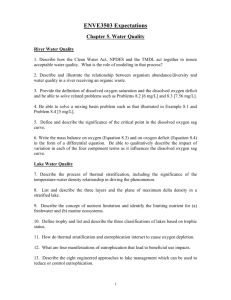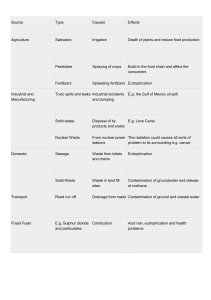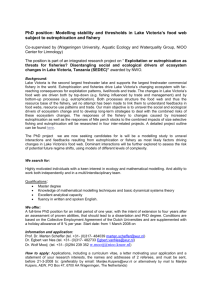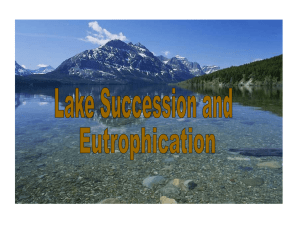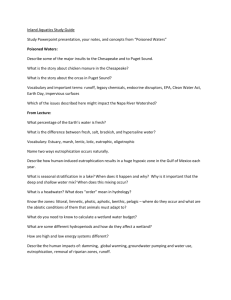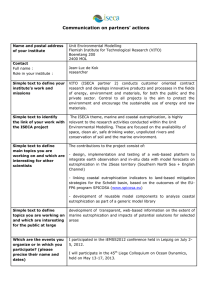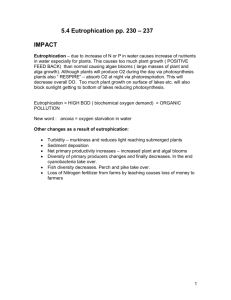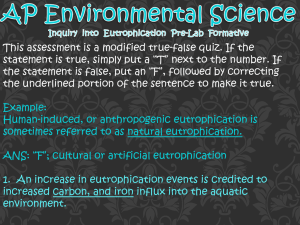Lake Eutrophication
advertisement
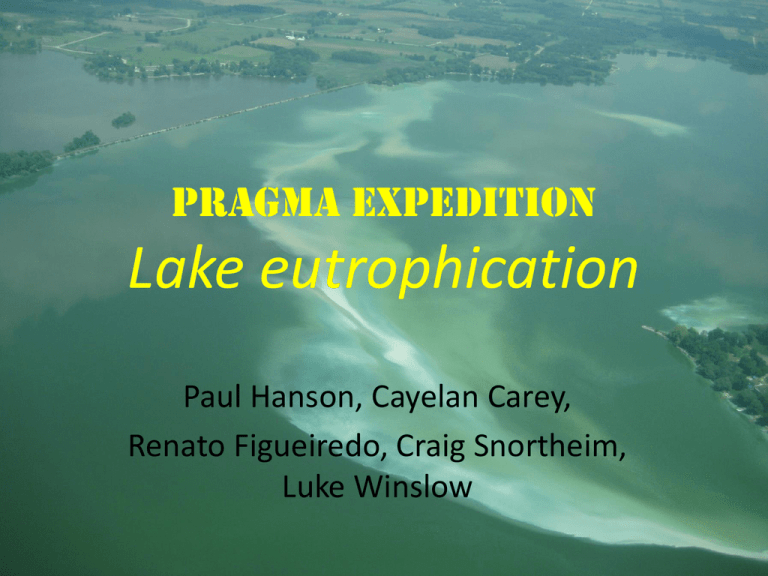
PRAGMA Expedition Lake eutrophication Paul Hanson, Cayelan Carey, Renato Figueiredo, Craig Snortheim, Luke Winslow To support the growing global population, agricultural production must increase 70% There are only a few places remaining to be converted to 100% food production. Higher food production requires more water and more nutrients. An unintended consequence is eutrophication (excess nutrients that degrade water quality). Eutrophication leads to… • Poor water clarity • Loss of macrophytes • Bad smell • Toxic water conditions • Dead fish • Reduced ecological and economic value Confronting even a narrow slice of this global issue requires: - New data, rapidly becoming available - New models for natural systems - Expertise from multiple disciplines – natural sciences, computer science & technology Expedition: Discover the rules controlling phytoplankton community dynamics and water quality Goals • Create a collaborative human and technological infrastructure that supports distributed team • Obtain new data from GLEON to confront models • Calibrate a new hydrodynamic-water quality model, GLM-FABM-AED, to Lake Mendota, Wisconsin (USA). • Investigate whether the model can reproduce the observed lake physical-biological features of interest • Consider a different set of rules that govern biological communities in lakes • Expand research to additional lakes and broader research community 8 Accomplishments • Data for L. Mendota have been obtained • Lake model has been partially calibrated – Default parameters transferred from literature – Physics calibrated – Water quality calibration begun • HTCondor implementation – “R” code wrapper written for the model – Works for physics, now need the water quality • Overlay network (Florida, Virginia Tech. Wisconsin) installed and in use • Expansion to other sites, Australia and New Zealand, has commenced • Simulations for science – Just beginning!! 9 Exciting outcomes are being realized: 1. Demonstration of harmonized distributed resources – people, data, technologies 2. Working phytoplankton emergence model 3. Management of thousands of scenarios 4. Visualizations of complex predictions and observations 5. Students trained in the science and cyberinfrastructure 6. Engaged GLEON++ community 7. Contributions to water quality and eutrophication knowledge (papers!)


